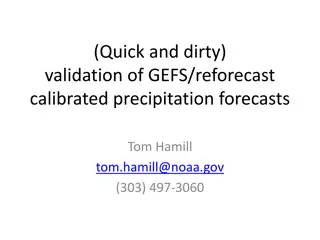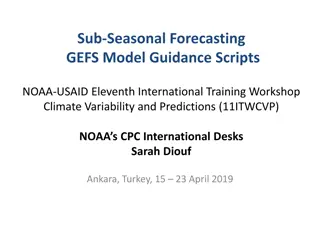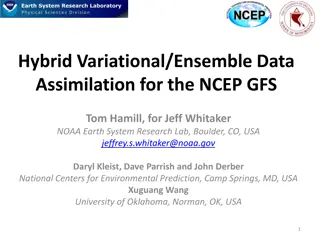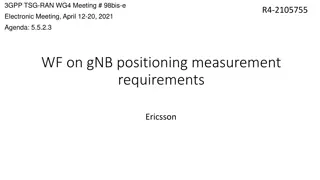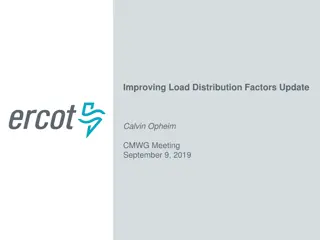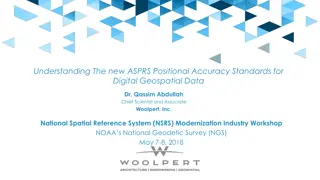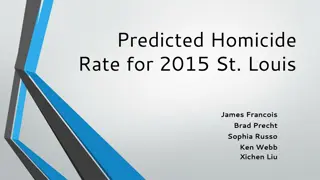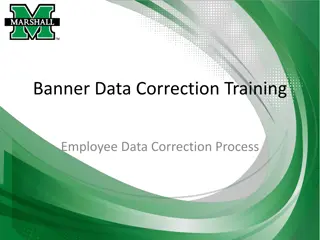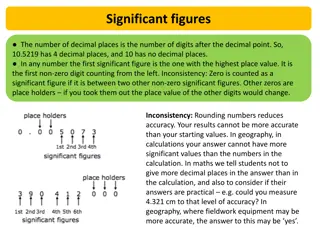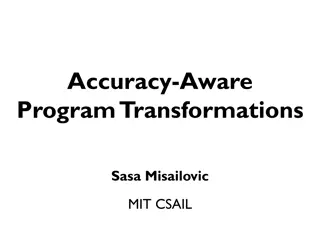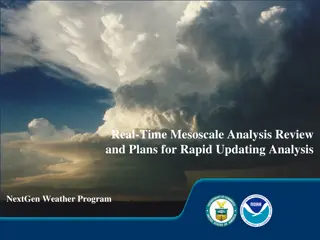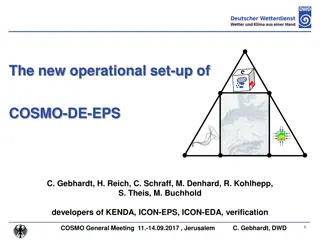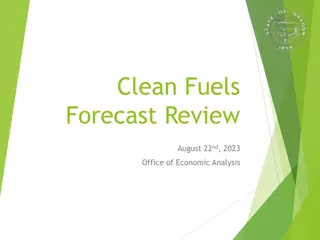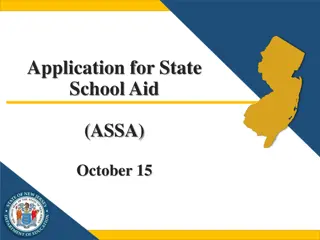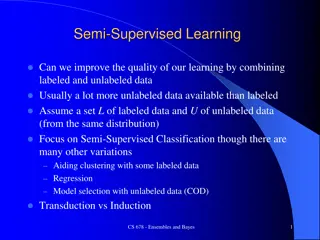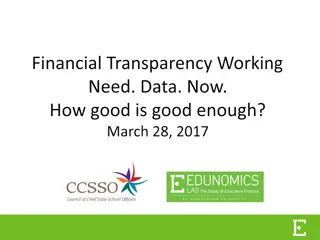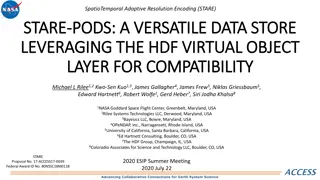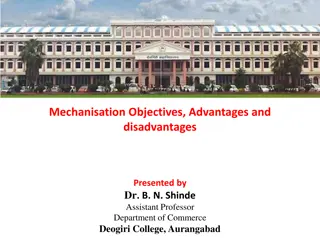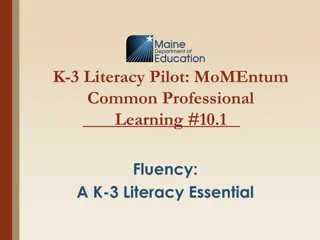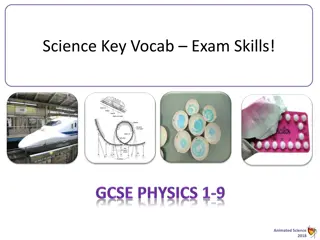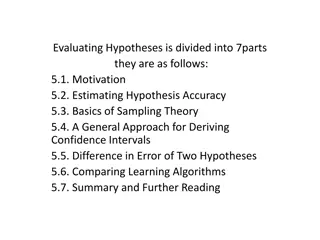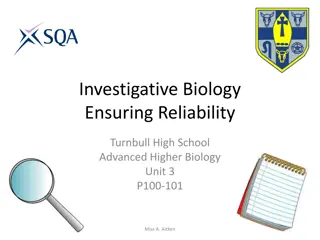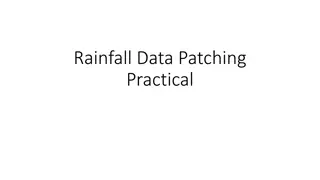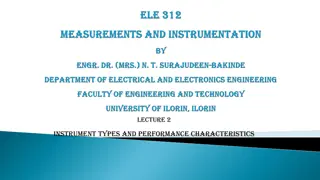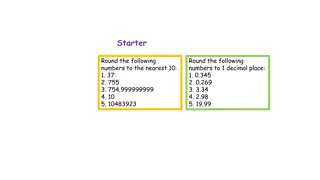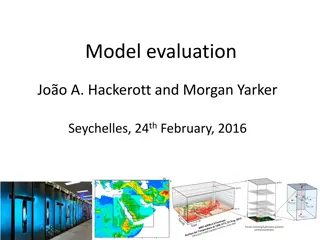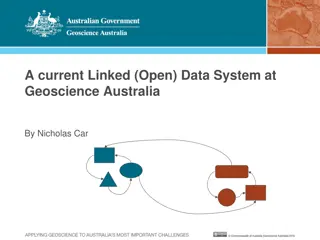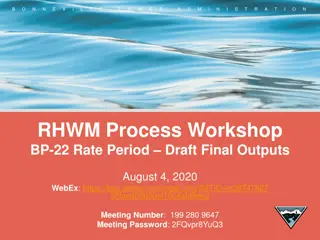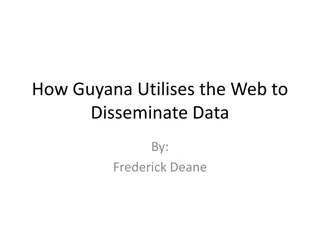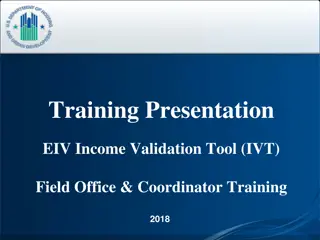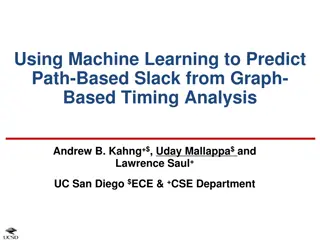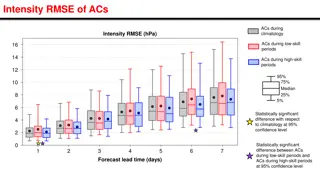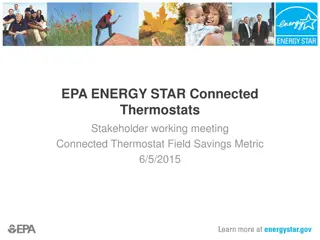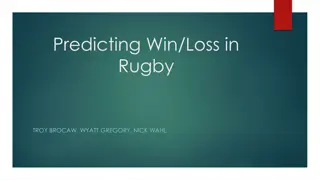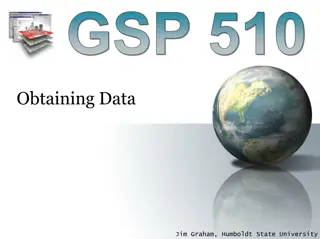Leveraging Reforecast Data to Enhance GEFS Forecast Accuracy
Utilizing historical reforecast data from the GEFS model, this study explores methods to improve forecast bias over different timeframes and seasons, highlighting the benefits and limitations of decaying averages for calibration. The analysis covers a range of years, focusing on biases in various months and transition seasons, offering insights into better calibration strategies to enhance forecast reliability.
Download Presentation

Please find below an Image/Link to download the presentation.
The content on the website is provided AS IS for your information and personal use only. It may not be sold, licensed, or shared on other websites without obtaining consent from the author. Download presentation by click this link. If you encounter any issues during the download, it is possible that the publisher has removed the file from their server.
E N D
Presentation Transcript
Statistical Post Processing - Using Reforecast to Improve GEFS Forecast Yuejian Zhu Hong Guan and Bo Cui ECM/NCEP/NWS Dec. 3rd2013 Acknowledgements: EMC Ensemble team; Dan Collins (CPC)
GEFS Reforecast Configurations Model version GFS v9.01 last implement May 2011 GEFS v9.0 last implement Feb. 2012 Resolutions Horizontal T254 (0-192hrs 55km); T190 (192-384hrs 70km) Vertical L42 hybrid levels Initial conditions CFS reanalysis ETR for initial perturbations Memberships 00UTC - 10 perturbations and 1 control 12UTC 1 control forecast Output frequency and resolutions Every 6-hrs, out to 16 days Most variables with 1*1 degree (and 0.5 degree, too) Data is available 1985 - current GEFS operational futures TS relocation (not in reforecast) STTP (in reforecast) Reference: Hamill and et al. 2013 (BAMS)
Using Reforecast Data for Tests Bias over 24 years (24X1=24), 25 years (25x1=25) Bias over 25 years within a window of 31days Bias over recent 2, 5, 10, and 25 years within a window of 31days (2x31, 5x31, 10x31, 25x31) Bias over 25 years with a sample interval of 7days within a window of 31days and 61days (~25x4 and ~25x8) 31days 1985 1986 . . . day-15 day day+15 2009 2010
Using 25-year reforecast bias (25 data) to calibrate latest year (2010) Decaying average is better than reforecast climatology Winter 2010 Spring 2010 Decaying average is not good for transition season, especially from cold bias (-) to positive bias (+)
Using 25-year reforecast bias (25 data) to calibrate latest year (2010) Summer 2010 Decaying average has the same value as reforecast Fall 2010 Another bad for decaying average for longer lead time since bias from positive (+) to negative (-)
Using 25-year reforecast bias (25 data) to calibrate latest year (2010) January Raw cold bias February Raw cold bias Look at month by month For validation March April Less cold bias Turn to warm bias
Using 25-year reforecast bias (25 data) to calibrate latest year (2010) Look at month by month Northern American has the same characteristics as Northern Hemisphere
T2m for different reforecast samples sensitivity on the number of training years (2, 5, 10, and 25 years) sensitivity on the interval of training sample (1 day and 7 days) Skill for 25y31d s running mean is the best. 25y31d s thinning mean (every 7 days) is very similar to 25y31d s running mean. 25y31d s thinning mean can be a candidate to reduce computational expense and keep a broader diversity of weather scenario!!! Long training period (10 or 25 years) is necessary to help avoid a large impact to bias correction from a extreme year case and keep a broader diversity of weather scenario!!
Using reforecast to improve current bias corrected product r2, NH, 2010 1 Winter r could be estimated by linear regression from joint samples, the joint sample mean could be generated from decaying average (Kalman Filter average) for easy forward. 0.9 Spring 0.8 0.7 Summer 0.6 Fall 0.5 0.4 0.3 0.2 0.1 0 0 1 2 3 4 5 6 7 8 9 10 11 12 13 14 15 16 Day Bias corrected forecast: The new (or bias corrected) forecast (F) will be generated by applying decaying average bias (B) and reforecast bias (b) to current raw forecast (f) for each lead time, at each grid point, and each parameter. ) ( ( ) ( ) ( , , t r t f t j i j i j + = ) 1 ( ) ( ) F b r t B t 2 2 , , , , i i j i j i j
Using reforecast to improve current bias corrected product (240-hr forecast, 2010 ) Spring Summer Winter Perfect bias Full
Summary Surface temperature is strongly biased for NH/NA Cold bias for winter, warm bias for summer Uncorrected soil moisture table GFS has been implemented, but GEFS is not. Decaying averages are good for winter/summer, but not good for extended forecast of transition season. 2% decaying weight has overall better value, but 10% weight is good for short lead time (1-3 days) Very difficult to improve the skills for 500hPa height possibly due to less bias or insensitivity to bias correction 25y31d s thinning mean can be a candidate to reduce computational expense and keep a broader diversity of weather scenario Adding reforecast information will improve current bias-corrected product. Bias and its seasonal variation are model-dependent. Whether the improvement found here will occur for the new GEFS version need to be confirmed later!!
Using 24-year reforecast bias (24 data) to calibrate latest year (2009) Spring 2009 Winter 2009 Decaying averages are not good except for day 1-2 2% decaying is best for all lead time Summer 2009 Fall 2009 Decaying average is equal good as reforecast, except for week-2 forecast Decaying averages are not good except for day 1-3
Comparison between 2009 and 2010 Summer 2009 Summer 2010 2009 2010 The bias is very similar Fall 2009 Fall 2010
Comparison between 2009 and 2010 Winter 2010 Winter 2009 The bias is very similar 2010 2009 Spring 2009 Spring 2010
Using 25-year reforecast bias (25 data) to calibrate latest year (2010) 500hPa height Winter 2010 Very difficult to improve the skills Spring 2010


